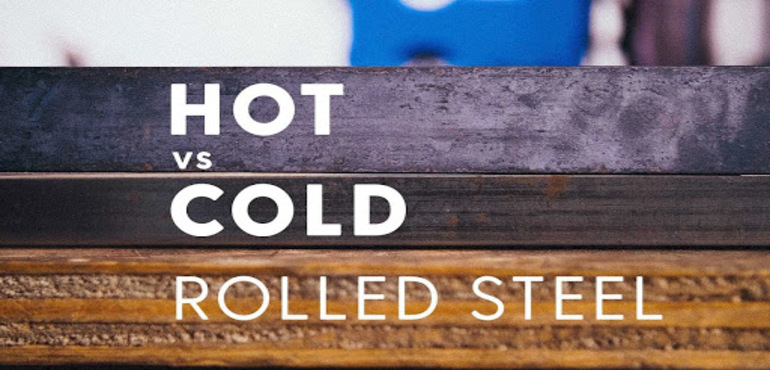Differences Between Hot and Cold Rolled Steel
The main difference between hot and cold rolled steel is in how they are processed. Hot rolled steel is steel that has been rolled at high temperatures, while cold rolled steel is essentially hot rolled steel that is further processed in cold reduction materials. Here, the material is cooled followed by annealing and/or tempers rolling. Steels of different grades and specifications can be either hot or cold rolled.
Hot Rolled Steel
Hot rolling, the process used to make hot rolled steel, involves rolling steel at high temperatures (typically over 1700˚F). These high temperatures are above steel’s recrystallization temperature, allowing the steel to be easily shaped, formed, and made in larger sizes. As it cools, hot rolled steel tends to shrink non-uniformly, giving less control on the size and shape of the finished product when compared to cold rolled steel.
CHARACTERISTICS OF HOT ROLLED STEEL
Hot rolled steel tends to have a scaly finish which can be removed by pickling, grinding, or sand-blasting. This steel is essentially normalized, meaning free from internal stresses that can arise from quenching or work-hardening processes, because it is allowed to cool at room temperature. Other properties may include:
- Slightly rounded edges and corners for plate products (due to shrinkage and less precise finishing)
- Slight distortions
- More malleable and able to be turned into various shapes
- Increased ductility and toughness
ADVANTAGES OF HOT ROLLED STEEL
Hot rolled steel tends to be cheaper than cold rolled steel because it is manufactured without any delays in the process and does not require reheating like cold rolled steel. It is also essentially normalized as it is allowed to cool at room temperature; this means it’s free from internal stresses that can arise from quenching or work-hardening processes.
APPLICATIONS OF HOT ROLLED STEEL
Hot rolled steel tends to be cheaper than cold rolled steel because it is manufactured without any delays in the process and does not require reheating like cold rolled steel. It can be used in applications where precise shapes and tolerances are not required, such as:
- Structural Components (Railroad Tracks, I-Beams, Sheet Metal)
- Agricultural Equipment
- Metal Buildings
- Stampings
- Automotive Frames
Cold Rolled Steel
Cold rolled steel is essentially hot rolled steel that has been further processed by being allowed to cool at room temperature and annealed or temper rolled. Cold rolling produces steel with closer dimensional tolerances and a wider range of surface finishes than hot rolling. It is also up to 20% stronger than hot rolled through the use of strength hardening.
When making more precise shapes, the process involves:
- Breakdown
- Semi-Finishing
- Sizing
- Semi-Roughing
- Roughing
- Finishing
ADVANTAGES OF COLD ROLLED STEEL
Cold rolled steel typically results in a product with a better, more finished surface with closer tolerances. It also yields smoother surfaces that are oily to the touch. Other advantages include:
- Can be used in precise applications
- Harder and stronger than hot rolled steels
- Increased hardness, resistance against tension breaking, and resistance against deformation due to work hardening
- Aesthetically pleasing finish with a wider range of surface finishes
APPLICATIONS OF COLD ROLLED STEEL
Cold rolled steel is used in applications where tolerances, surface conditions, concentricity, and straightness are factors. It also offers a more aesthetic and visually appealing surface. Other applications include:
- Home Appliances
- Metal Furniture
- Aerospace Structural Components
- Automotive Parts


